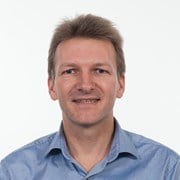The underlying idea of the INDISAL-project is to develop an individual biometric "finger-print" identification of each salmon in industrial sea based salmon farming, enabling the gathering of status information for observed individual salmons over time, through the use of underwater equipment and camera-systems along with advanced computer vision algorithms. The gathered information will support improved farming control, animal welfare and productivity.
In the INDISAL-project, the partners will develop and improve innovative underwater light and camera solutions in order to receive high quality underwater video recordings. These, in turn, will allow to exploit computer vision and machine learning techniques to automatically identify individual fish and measure key fish-status-variables related to A) appearance (e.g. size and shape, physical damages like wounds and lice counting) and B) behaviour (e.g. swimming speed, stress, feeding activity and welfare indicators), that can be assigned as meta data to the observed individual fish. The project is based on the insight that salmons, which are transferred from the hatchery to a fish-cage, have already developed a uniquely identifiable and robust spot-pattern and individual salmons will be identified using the melanophore spot-pattern in the head region (and/or the body region), like a biometric finger-print. The innovation enables the salmon farming industry to have an overview of the current state of each individual salmon (i.e. growth-rate, quality, health status), while the collected time-line data of individual salmons can be used to analyze in detail which operational events had an impact on both individual fish and the whole fish-population.
Partners:
- SEALAB AS
- Mowi ASA
- Marin Aqua AS
- Safepath AS
- Inovamares AS
- NTNU
- SINTEF Ocean
The project is financed by the Norwegian Research Council (Norges Forskningsråd) within the HAVBRUK2 program.

